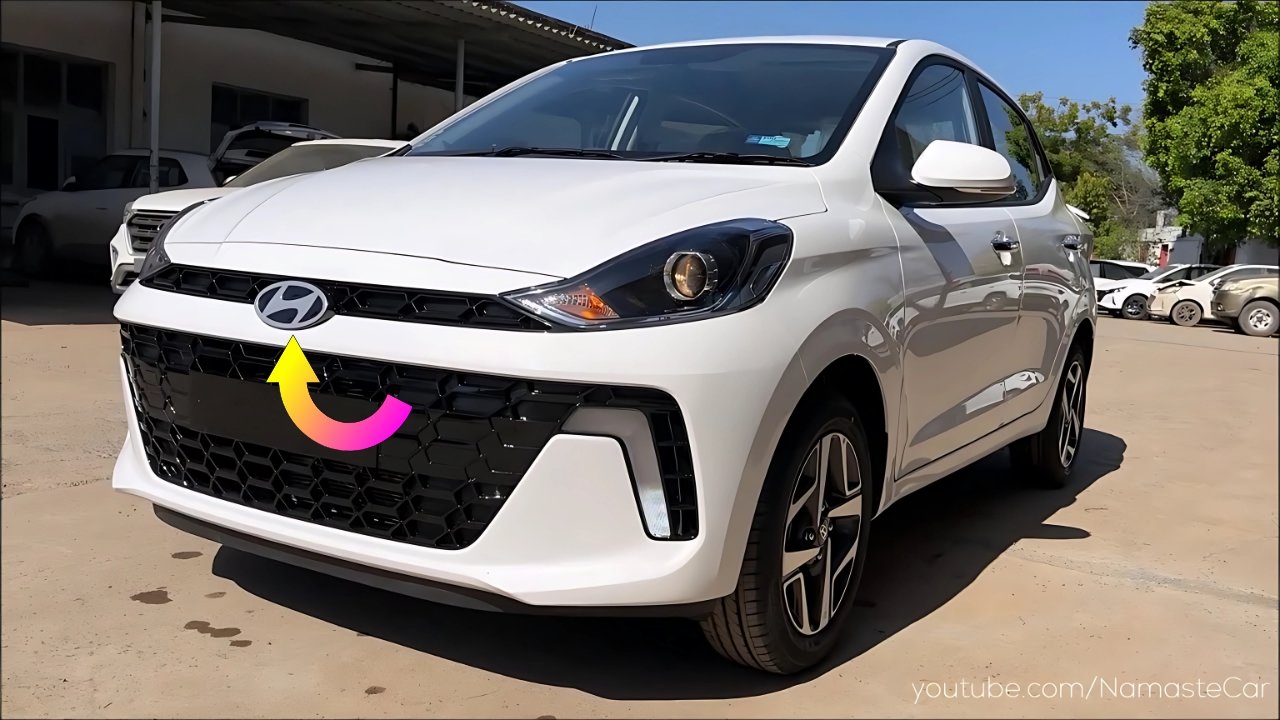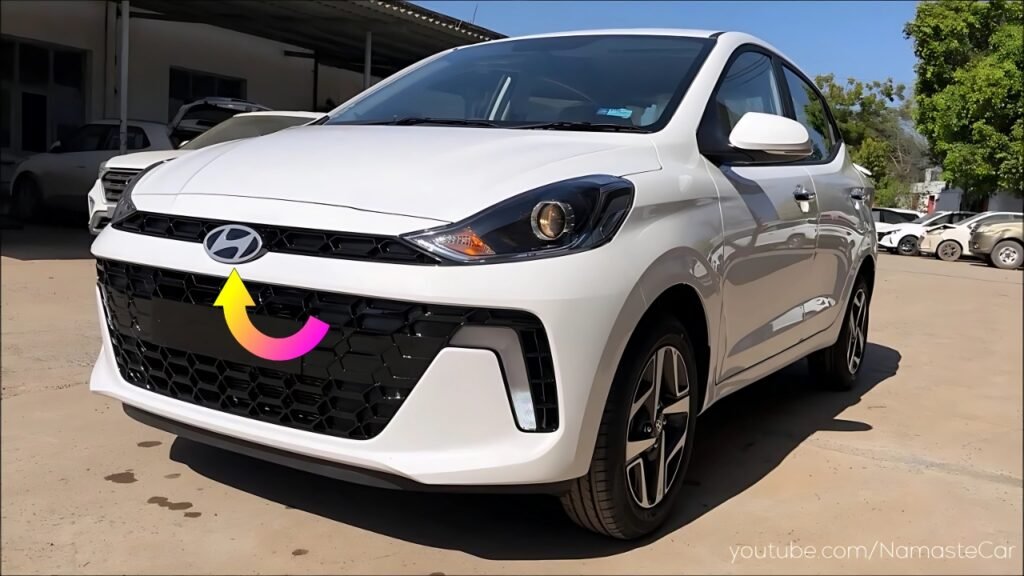Hyundai Aura : The commercial vehicle segment witnessed an interesting shift this week as Hyundai’s updated Aura sedan gained remarkable traction among taxi operators and ride-sharing professionals across major Indian cities. Fleet operators report overwhelming satisfaction with the vehicle’s fuel efficiency numbers, which directly impact their daily earnings and operational costs. This growing preference highlights how practical considerations often outweigh flashy features when vehicles serve as income-generating tools rather than lifestyle statements.
Fuel Economy Numbers That Change Business Equations
The Aura’s exceptional mileage figures stem from comprehensive engineering refinements that optimize every aspect of fuel consumption. The engine mapping prioritizes efficiency in the speed ranges most commonly used during city driving, where taxis spend most of their operational hours. Aerodynamic improvements, though subtle to the eye, reduce drag coefficient significantly, contributing to highway efficiency that surprises even experienced drivers.
Real-world testing by fleet operators reveals consistent fuel economy exceeding 24 kilometers per liter in mixed driving conditions, with some drivers reporting even higher figures through careful driving techniques. The idle stop-start system prevents fuel wastage during traffic signals and passenger pickups, saving precious drops that accumulate into substantial monthly savings. These efficiency gains translate directly into improved profit margins for drivers who often operate on thin margins.
Durability Engineering Meets Commercial Demands
Commercial usage subjects vehicles to punishment that private owners rarely inflict, making durability paramount for this segment. The Aura addresses these demands through reinforced components in high-wear areas, including door hinges that withstand thousands of daily cycles and seat frames built for continuous occupancy. The suspension system handles perpetual loading and unloading without sagging, maintaining ride height even after accumulating substantial mileage.

Engine components receive special coatings that reduce wear during extended idling periods common in commercial operation. The cooling system maintains optimal temperatures even during summer traffic crawls, preventing overheating issues that sideline vehicles and cost drivers valuable earning time. Transmission calibration considers the stop-and-go nature of city taxi operation, with clutch components specified for longevity rather than just smooth engagement.
Interior Design Prioritizes Passenger Comfort
Rear seat comfort receives particular attention, acknowledging that satisfied passengers lead to better ratings and repeat business for drivers. The seat cushioning maintains support throughout long rides, using materials that resist compression despite constant use. Legroom dimensions accommodate tall passengers comfortably, preventing complaints that affect driver ratings on ride-sharing platforms.
Air conditioning performance becomes crucial during Indian summers, with the system capable of cooling the cabin rapidly between rides. The ventilation design ensures even distribution, preventing hot spots that make passengers uncomfortable. Door pockets and seat-back pockets provide convenient storage for water bottles and personal items, details that passengers appreciate during longer journeys.
Maintenance Costs That Support Profitability
Service intervals extend longer than many competitors, reducing the frequency of workshop visits that take vehicles off the road. Parts pricing remains reasonable through extensive localization, avoiding the imported component costs that inflate maintenance bills. The design simplifies common service procedures, reducing labor time and associated costs during routine maintenance.
Hyundai’s service network expansion into smaller cities ensures support availability wherever drivers operate, crucial for vehicles that cannot afford extended downtime. Workshop timing flexibility accommodates the unusual schedules of commercial drivers who often can only service vehicles during off-peak hours. Warranty terms acknowledge commercial usage patterns, providing coverage that remains valid despite high mileage accumulation.
Driver-Centric Features Reduce Fatigue
Extended driving shifts demand features that minimize fatigue and maintain alertness. The driving position offers multiple adjustments, allowing drivers to find comfortable settings that prevent back strain during long hours behind the wheel. The steering weight calibration reduces effort during constant maneuvering in traffic, preventing shoulder fatigue that accumulates throughout shifts.
Visibility design eliminates blind spots that complicate navigation through congested streets, reducing stress and accident risk. The instrumentation remains clear and simple, presenting essential information without distraction. Storage spaces throughout the front cabin accommodate the various items drivers need readily accessible, from documents to payment devices.
Technology That Supports Business Operations
Digital features focus on practicality rather than entertainment, with USB ports positioned for convenient phone mounting and charging. The audio system includes Bluetooth connectivity for hands-free calling, essential for coordinating pickups while driving. GPS compatibility through phone projection eliminates the need for separate navigation devices, reducing dashboard clutter.
Safety features like ABS and airbags come standard, protecting both driver investments and passenger confidence. Reverse parking sensors assist during tight passenger pickups, preventing minor damages that accumulate into significant repair costs. These technologies work reliably without complexity that could confuse drivers transitioning from older vehicles.
Realme 12 Pro Plus 5G – Elegant design smartphone comes for cute girls
Hyundai Aura Economic Impact on Transportation Sector
The Aura’s success among commercial operators influences the broader transportation economy through improved driver earnings and reduced operational costs. Financial institutions recognize these benefits, offering favorable loan terms for commercial purchases based on proven earning potential. Insurance companies adjust premiums favorably, acknowledging the vehicle’s safety record and lower accident rates.
The multiplier effect extends to fuel stations, service centers, and spare parts dealers who benefit from the growing fleet presence. Driver communities share maintenance tips and efficiency techniques, creating knowledge networks that maximize vehicle potential. This ecosystem development strengthens the overall commercial vehicle segment, benefiting all stakeholders from manufacturers to end consumers who enjoy reliable, affordable transportation services.
